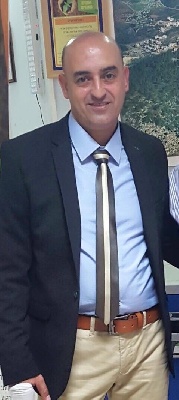Work Experience
1991 – Present Choreographer For Several Dabka Ensembles North Region Choreographer for the ensemble of “Kana Galilee 2010 – 2017 Chorographer of the ensemble of “Nazareth representative ensemble” 2006-2009 Choreographer of the ensemble ” Eilot village ” 2012 – 2017 Choreographer of the ensemble ” Jafra ” touran 2008 – 2014 Choreographer of the ensemble ” Kawkab abu hija ” 2015 – 2017 Choreographer of the French church ensemble ” Franciscan Folklore ” 2016 Choreographer of the ensemble ” Ebilin Primary school ” 1999 – 2004 Choreographer of the ensemble of “community center daboriya” 2009 – 2017 Choreographer of the Bedouin folklore ensemble of ” Wadi el Hamam ” 2017 Choreographer of the folklore ensemble ” Albayader” from dier hanna galilee 1995 – 1998 / 2005 – 2010 / 2014 – 2016 Choreographer of the folklore ensemble ” Carmel Mountain Folklore ensemble ” Isfiya daliat el carmel 2012 – 2017
Choreographer of the folklore ensemble “al Ouzier” 2013 – 2015 Choreographer of the folklore ensemble ” Haifa Karama Center ” 2002 – 2004 Choreographer of the folklore ensemble ” community center Arraba ” 2011 – 2014
Choreographer of the folklore ensemble of Renai Municipality 1991 – 1994 / 1998 – 2007 / 2016 – 2017 . Choreographer of the folklore ensemble Shibli Municipality 2016-2017 . Choreographer of the druz folklore ensemble of Rami 1991 – 1996. Chereographer of the dabka ensemble of ” Sakhnin collage ” 1994 – 2002
Music Publisher for Several dancing Albums :
the Lebanese dabka dancing album 1995 the ” takasim Mijwez ” album 1998 the ” Yargul Folklore ” album 2002 the ” Turkish Israeli folklore ” album 2011 the ” Desert Dance ” Album 2014 the ” Galilee Old times ” Album 2000 the ” Folklore remixing songs of Fairouz ” ( Cover tracks new style ) 2013 the ” Jordanian Royal Folklore ” Album 2004 the ” Tlea’na al daw ” album 2016 the ” Ismaa ” Album 2017 the ” tayara dancing ” album 2006
the tracks are new making as folkloric music by marwan tatour to fit his choreography dances for his ensembles .
Awards & Diplomas :
Prague Folklore youth meeting – Czech Republic 2016 Lodz Cultural meeting – Poland 2015 Ramallah Folklore Peace – Palestine 2014 Lets Meet the Three cultures in Jerusalem – Israel 2012 Logos Nations Culture Artistic Excellency – Israel 2010 Jarash Artistic Excellency – Jordan 2008 Nazareth Municipality Respect diploma – Israel 2005 Evelin church school respect diploma – Israel 2002 Larnaca Youth & Culture diploma – Cyprus 1999 Albadia Artistic Excellency – Israel 2001 , 1994
Marwan’s Artistic choreography Jenner
Dabka or dabki and dabkeh also – is an Galilean ( from galile) folk dance native to the Levant countries. It is popular in several middle eastern countries such as Jordan, Lebanon, Palestine, Hatay (a city of Turkey), Syrian coast,and among the Assyrians of Iraq. A line dance, it is widely performed at weddings and joyous occasions. The leader of the dabke heads the line, alternating between facing the audience and the other dancers.
Dabke in Arabic is literally ” stamping of the feet.” The leader, called raas (“head”) or lawweeh (“waver”), is allowed to improvise on the type of dabke. The leader twirls a handkerchief or string of beads known as a masbha (similar to a rosary), while the rest of the dancers keep the rhythm. The dancers also use vocalizations to show energy and keep up the beat. The dabke leader is supposed to be like a tree, with arms in the air, a proud and upright trunk, and feet that stomp the ground in rhythm. At weddings, the singer begins with a mawwal. The raas or lawweeh takes the lead. Everyone does a basic 1-2-3 step before the song kicks in. At weddings, the dance is sometimes performed by a professional troupe dressed in costume.
There is not one story on the origin of dabke, and it is difficult to find accounts of its origin from reputable sources, though many stories have been told. One common story is told below: The “dabkeh” originated in the Levant where houses were built from stone with a roof made of wood, straw and dirt. The dirt roof had to be compacted which required stomping the dirt hard in a uniform way to compact it evenly. This event of cooperation is called ta’awon and from here comes the word awneh, meaning “help.” This developed into the song Ala Dal Ouna ( على دلعونا ), or roughly translated “Let’s go and help”. The dabke and the rhythmic songs go together in an attempt to keep the work fun and useful .
